This is one of the more interesting bird behaviors I’ve photographed and it’s always entertaining to watch.
- I posted these images and described the behavior almost 5 years ago (6-15-2002) but few current readers have seen that post so I thought it deserved a rerun. I’ve modified the format and rewritten some of the text.
1/2500, f/7.1, ISO 500, Canon 7D, Canon EF 500mm f/4L IS USM + EF 1.4 III Extender, not baited, set up or called in
Western Grebe parents share the duties of back-brooding their chicks and it’s quite a demanding chore when you consider the fact that the “free” adult is usually busy fishing to feed his/her family. By the time they reach this age they’re a big load to bear. At this point there’s not enough room on board for even three chicks and sometimes there’s four of them.
1/2000, f/7.1, ISO 500, Canon 7D, Canon EF 500mm f/4L IS USM + EF 1.4 III Extender, not baited, set up or called in
So when one of the parents has had enough brooding for the moment it “dumps” the chicks by doing a wing flap. The combination of the raised body position and the flapping of the wings…
1/1600, f/7.1, ISO 400, Canon 7D, Canon EF 500mm f/4L IS USM + EF 1.4 III Extender, not baited, set up or called in
dislodges the chicks and they go sliding down the back of the parent…
1/1600, f/7.1, ISO 400, Canon 7D, Canon EF 500mm f/4L IS USM + EF 1.4 III Extender, not baited, set up or called in
and into the drink. This is usually done with the other parent nearby and the chicks then go scurrying to climb aboard the second parent while the first adult gets a much-needed break from babysitting.
1/3200, f/6.3, ISO 400, Canon 7D, Canon EF 500mm f/4L IS II USM + EF 1.4 III Extender, not baited, set up or called in
Here’s another example of the same behavior from a different angle. This time there’s only one chick and it tries mightily to hang on…
1/3200, f/6.3, ISO 400, Canon 7D, Canon EF 500mm f/4L IS II USM + EF 1.4 III Extender, not baited, set up or called in
but it too…
1/3200, f/6.3, ISO 400, Canon 7D, Canon EF 500mm f/4L IS II USM + EF 1.4 III Extender, not baited, set up or called in
ends up taking a bath.
It’s a well documented behavior in both Western and Clark’s grebes and I’ve photographed it several times. This from Birds of North America, Online:
- “Both parents brood, male tends to carry newly hatched young more frequently than female. At end of brooding bout parent rises up in water and flaps wings, young fall off and move to other parent.”
For me it’s always an entertaining behavior to witness but it’s difficult to photograph because the adult gives no indication of when it’s going to happen. You just have to be ready for it and have lady luck on your side.
Ron


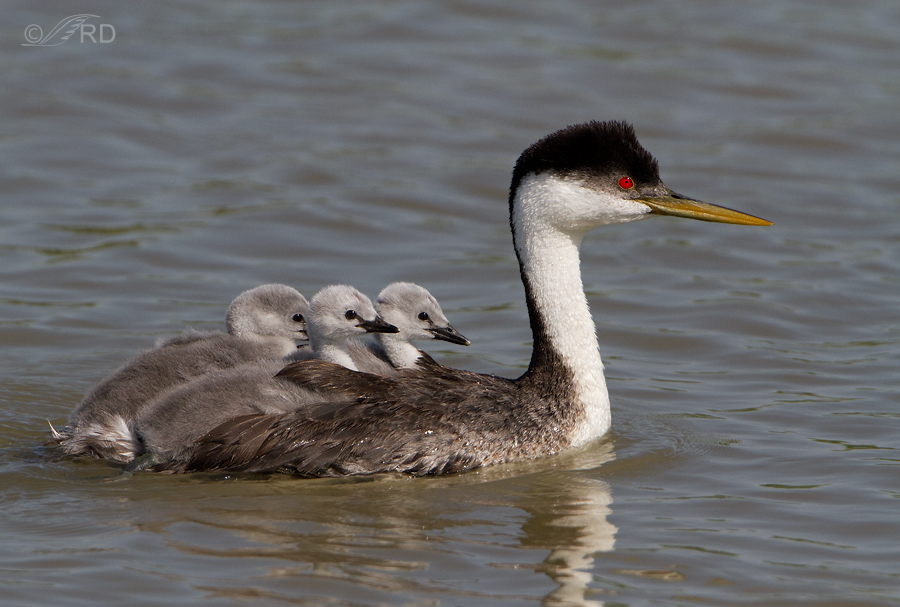
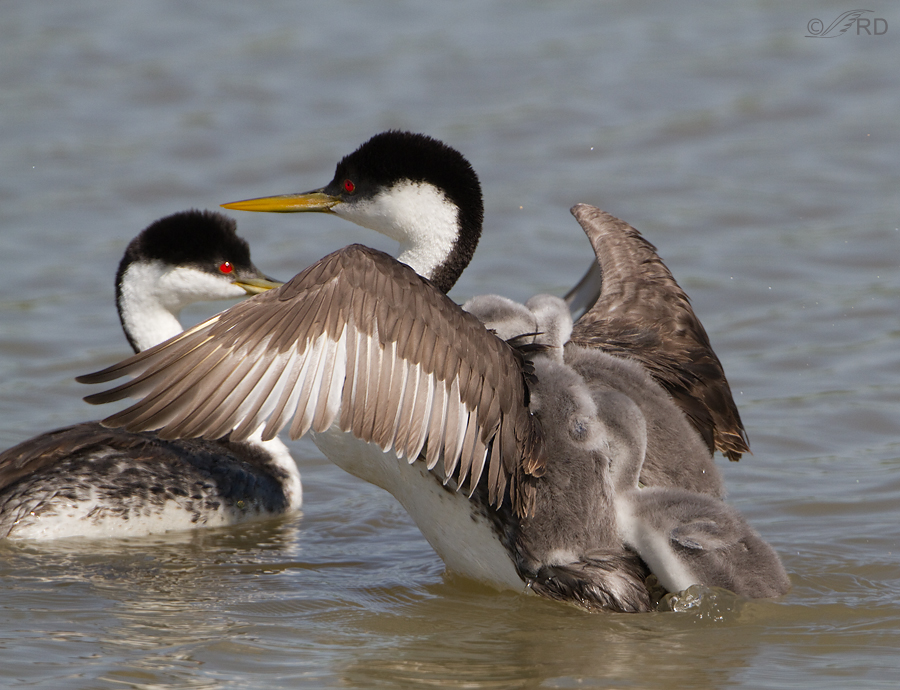
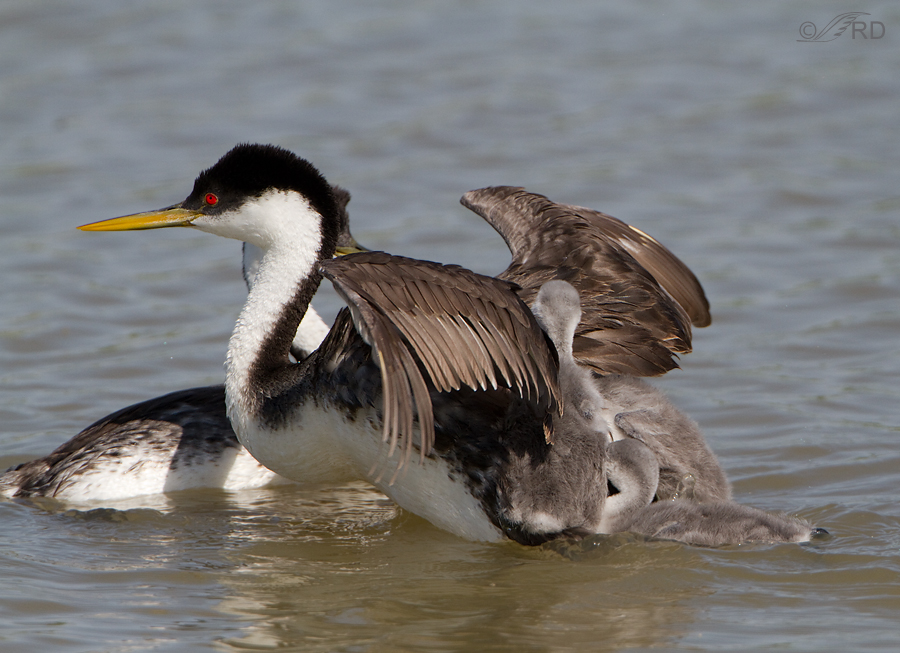
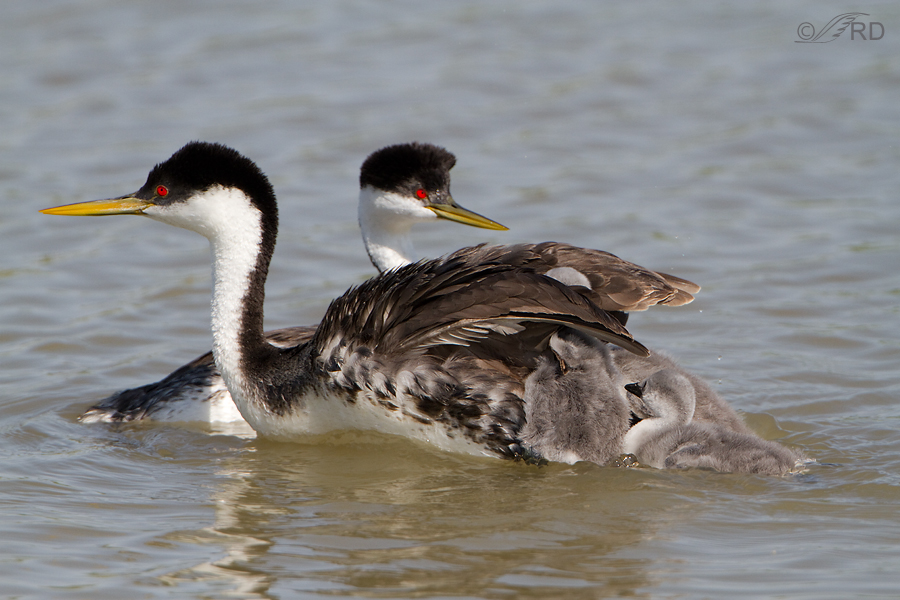
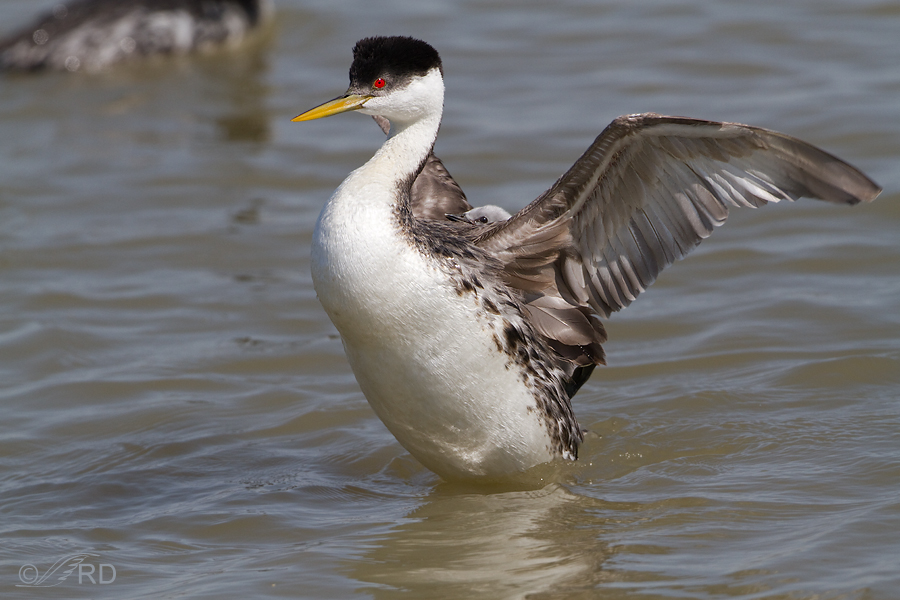
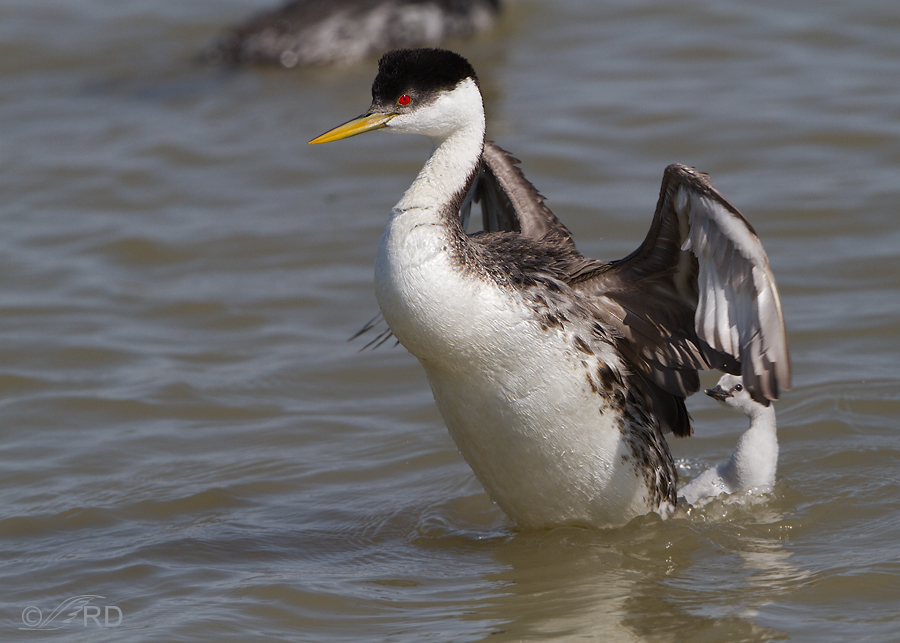
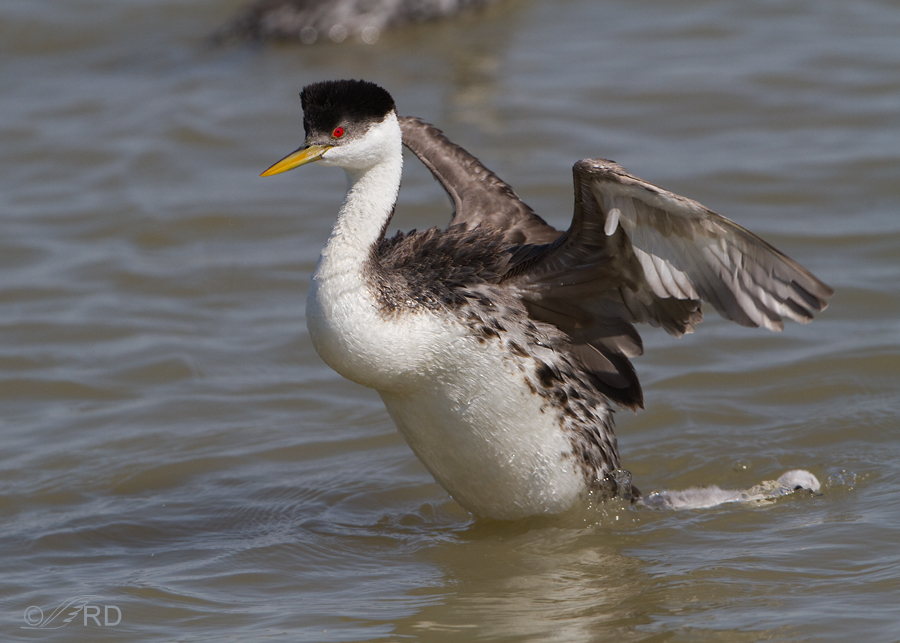
Beautiful, adorable and interesting! Thanks for the repost. 🙂
Hi Ron,
Nice shots as always. I was at Bear River Monday and this morning, and I have only been able to find two pairs of Western Grebe with one chick each, and one Western that was on a nest on Monday, but not today. The one chick is about the same size as the ones in your photos and was being fed by the parents, while the other one was quite a bit larger and I never saw it on the back of a parent. I could find no Clark’s chicks. That is in contrast to last year when I was here one week earlier and there were many Clark’s Grebes with chicks and several Western.
Thanks for that report, John. I haven’t yet seen grebe chicks at BR but then I’ve only been there once in the last couple of weeks.
Your photo of the last chick trying to hang on made on LOL. Thanks Ron
🙂
A series to start my day smiling. Broadly. Thank you.
I suspect that many parents would love to do the same. Across species…
Thank you, EC.
Such an elegant bird with those stunning red eyes. It seems the Common Merganser mother has a different method of lightening the load. I got some shots the other day with a Common Merganser with her bad hair-cut release five of her seven little ones into the water by diving for food. Quick and simple, babies in the water.
Yup, that would work well too, Shirley. Interesting the different ways they do it.
Wonderful series. They are so fun to watch, but the chicks never stop peeping, as a parent I would be annoyed by the noise. I have only seen a couple of chicks last Sunday. I saw something unusual last Sunday and I can’t find an answer for it perhaps you have seen it or know about it. I saw a Pied-billed Grebe with 2 grebe young and 2 coot young. She was caring and feeding the coots too. I read coots will lay eggs in other coots nests but not other birds. I imagine anything is possible, I wonder if she hatched the two or perhaps she adopted them later.
Wow, April – that would be something to see!
Perhaps coots are brood parasites (like cowbirds) and occasionally lay eggs in nests of other species.
If you run into anything about it I would enjoy reading it.
I just checked BNA and they say coots can be brood parasites. There’s a lot of info (too much to post here) so I’ll send it to you via email.
Thanks got it.
Thank you for the re-run! It’s definitely fun behavior to see, even though I’m sure the chicks don’t appreciate it.
They seem to take it in stride, Susan. I think they get used to it pretty quickly.
One of my favorites! Never get tired of seeing this behavioral sequence!
Thank you, Diane.
I had four “chicks” and can identiify with how those parents might feel having those “monkeys on their backs”….I love to you rereuns…I liked them the first time so enjoy seeing them again….
Patty, I only had one but she was a handful so I can’t imagine dealing with three or four of them.
Still an awesome series Ron!
Charlotte
Thanks, Charlotte.
It’s like the chicks have their own mini water slide! They’re so cute! I especially like the first shot with the 4th chick that hasn’t gotten with the program (there’s always one!) and the fifth shot with the youngster stubbornly hanging on. Grebes weren’t even on my radar before coming to your blog and now they’re among my favorites of your posts. Thank you for that. 🙂
Marty, grebes (Western, Clark’s and Pied-bills) are among my favorite birds to photograph because of their interesting behaviors and the fact that they occasionally approach me closely.
Great behavior shots, Ron! 🙂 I’m guessing the Merganser mothers don’t get that break since I’ve never seen a male around and they have a dozen or better chicks at one time! They are beautiful birds both as chicks and adults. 🙂
I don’t know, Judy. I have no experience with mergansers when they have youngsters.
Glad you did the re-run, quite interesting with some comedy.
Thanks, Jane.
Very neat behavior to catch. Great shots too.
Thanks, Donna.
Great photos! Just got a question – are the grebes’ young not able to swim as early as other water fowl species? In that last picture the chick seems to be floating head first very awkwardly!
Joanne – the chicks can swim almost immediately after hatching. The youngster you refer to is just coming back to the surface after being dumped. They float like a cork.
Oh! Thanks it looked a little worrisome. 🙂